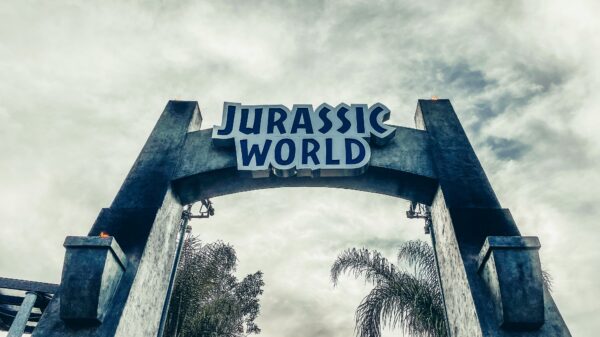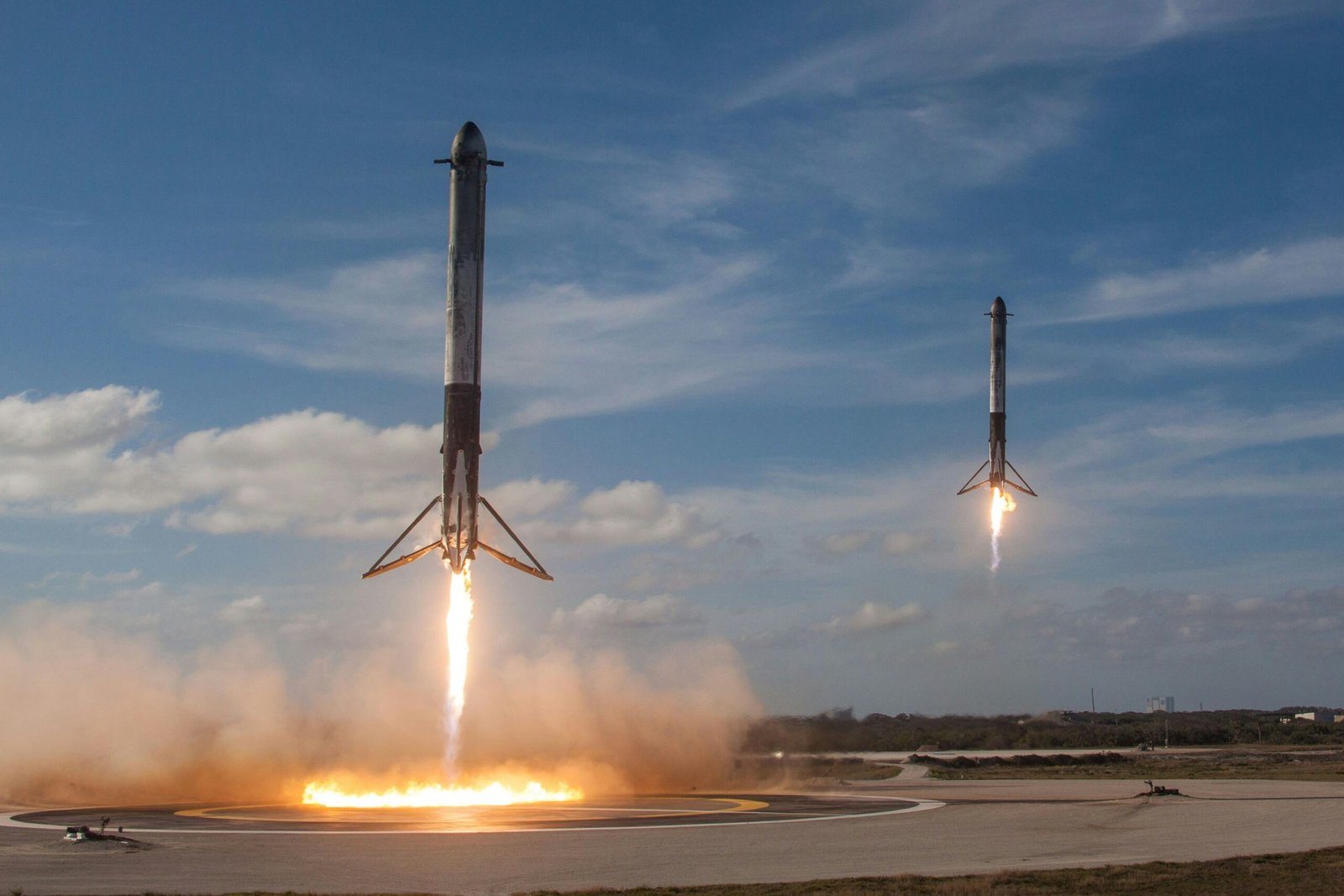SpaceX’s first manned mission to Mars represents a major milestone in Elon Musk’s long-standing goal of making humans a multi-planetary species. Musk, known for his audacious visions and relentless pursuit of innovation, has made it clear that he sees Mars as the next frontier for human exploration and colonization.
While previous missions to Mars have been unmanned, the prospect of sending humans to the red planet brings a whole new set of challenges and opportunities. One of the key hurdles is the development of a spacecraft capable of safely transporting humans to Mars and back. SpaceX has been working tirelessly on the design and testing of their Starship, a fully reusable spacecraft that will serve as the backbone of their Mars missions.
But the journey to Mars is not just about the technology. It also requires careful planning and preparation to ensure the safety and well-being of the astronauts. Musk envisions a fleet of Starships departing Earth during a specific launch window when the planets align favorably, reducing travel time and fuel requirements. The crew will undergo extensive training and will be equipped with the necessary supplies and resources to sustain themselves on the planet’s surface for an extended period.
Once on Mars, the astronauts will face a harsh and unforgiving environment. The thin atmosphere, extreme temperatures, and lack of readily available resources pose significant challenges for long-term habitation. However, Musk and his team are confident that with the right technologies and infrastructure in place, humans can not only survive but thrive on Mars.
The ultimate goal of SpaceX’s mission to Mars is to establish a self-sustaining colony on the planet. Musk envisions a future where thousands, if not millions, of people call Mars home. This vision goes beyond mere exploration; it is about ensuring the long-term survival of the human species by becoming a multi-planetary civilization.
While there are still many technical and logistical hurdles to overcome, the announcement of SpaceX’s first manned mission to Mars is a testament to the incredible progress we have made in space exploration. It is a reminder that humanity’s thirst for knowledge and exploration knows no bounds. As we venture further into the cosmos, we are not only expanding our understanding of the universe but also pushing the limits of what is possible for our species.
SpaceX’s success can be attributed to Musk’s relentless pursuit of innovation and his ability to assemble a team of brilliant engineers and scientists who share his vision. Under his leadership, the company has consistently pushed the boundaries of what is deemed possible in space exploration.
One of the key factors that sets SpaceX apart from other aerospace companies is its focus on reusable rocket technology. Musk recognized early on that the cost of space travel needed to be drastically reduced in order to make it more accessible. Traditional rockets are discarded after a single use, resulting in exorbitant costs for each launch. SpaceX’s Falcon 9 rocket, on the other hand, is designed to be reusable, dramatically reducing the cost of space missions.
Another area where SpaceX has made significant advancements is in the development of spacecraft capable of carrying humans. In 2012, the company became the first privately-funded company to send a spacecraft, the Dragon, to the International Space Station (ISS). Since then, SpaceX has been working tirelessly to refine and improve its crewed spacecraft capabilities, with the ultimate goal of sending humans to Mars.
Musk’s vision for SpaceX goes far beyond just sending humans to Mars. He envisions a future where humans become a multi-planetary species, with self-sustaining colonies on Mars and other celestial bodies. To achieve this ambitious goal, SpaceX is developing the Starship, a fully reusable spacecraft designed for long-duration space travel. The Starship is expected to be capable of carrying up to 100 people and will serve as the primary vehicle for future missions to Mars and beyond.
In addition to its ambitious goals, SpaceX has also made significant contributions to the scientific community. The company’s partnership with NASA has allowed for groundbreaking research and experiments to be conducted on the ISS. SpaceX’s Dragon spacecraft has been instrumental in delivering crucial supplies and equipment to the astronauts on board the ISS, ensuring the continued success of human space exploration.
Overall, Elon Musk’s visionary leadership and relentless pursuit of innovation have propelled SpaceX to the forefront of the aerospace industry. With its groundbreaking technology and ambitious goals, the company is revolutionizing space travel and bringing humanity one step closer to becoming a multi-planetary species.
In addition to the Starship and Super Heavy, Musk also outlined several other key elements of SpaceX’s ambitious plans for a manned mission to Mars. One of these elements is the establishment of a propellant production plant on Mars. Musk explained that in order to sustain a colony on the planet, it would be necessary to produce propellant locally rather than relying on Earth for resupply.
This propellant production plant would utilize the resources available on Mars, such as carbon dioxide from the atmosphere and water ice from the planet’s polar ice caps. By extracting these resources and converting them into propellant, SpaceX aims to create a self-sustaining fuel source for return trips to Earth and for future missions within the solar system.
Another crucial aspect of Musk’s plans is the development of a fully reusable interplanetary transport system. This system would not only enable the transportation of humans and cargo to Mars but also facilitate travel between different destinations within the solar system. Musk envisions a future where humans can travel not only to Mars but also to other planets and moons, opening up new possibilities for exploration and colonization.
Musk’s presentation sparked both excitement and skepticism among the scientific community. While many praised his ambitious vision and dedication to making humans a multiplanetary species, others raised concerns about the feasibility and cost of such a mission. However, Musk remains undeterred, stating that he is committed to making these plans a reality and that he believes humanity’s future lies beyond Earth.
Advancements in Rocket Technology
SpaceX has been at the forefront of rocket technology advancements, continually pushing the boundaries of what is possible. The company’s Falcon 9 rocket, with its ability to land vertically after launch, has revolutionized the industry. This breakthrough in reusable rocket technology has paved the way for more ambitious projects, such as the manned mission to Mars.
Musk plans to further improve rocket technology with the Super Heavy, which will be the most powerful rocket ever built. The Super Heavy will have the capability to carry heavy payloads and transport large numbers of passengers to Mars. Its reusable design will enable multiple missions, making it a cost-effective solution for interplanetary travel.
In addition to the Super Heavy, SpaceX is also working on the Starship spacecraft, which will serve as the vehicle for interplanetary missions. The Starship will be able to carry both crew and cargo, and its design includes advanced life support systems and radiation shielding to ensure the safety of the astronauts on board.
One of the key advancements in rocket technology that SpaceX has been focusing on is the development of fully reusable rockets. Traditional rockets are single-use, meaning they are only able to be used for one mission before being discarded. This not only adds to the cost of space travel but also creates a significant amount of waste. SpaceX’s reusable rockets, on the other hand, can be used multiple times, significantly reducing the cost of launching payloads into space.
Another area where SpaceX has made significant advancements is in the field of rocket propulsion. The company has developed the Merlin engine, which powers the Falcon 9 rocket. This engine utilizes a combination of liquid oxygen and rocket-grade kerosene as its propellant, providing a high level of efficiency and performance. SpaceX has also been experimenting with new propellant combinations, such as methane, which could further improve the efficiency and environmental impact of rocket launches.
SpaceX’s advancements in rocket technology have not only revolutionized the space industry but have also sparked a new era of space exploration. The ability to land and reuse rockets opens up new possibilities for space missions, allowing for more frequent launches and the exploration of new destinations. With projects like the Super Heavy and Starship in the works, SpaceX is poised to continue pushing the boundaries of what is possible in space travel and exploration.
Ongoing Preparations and Challenges
While Musk’s vision for a manned mission to Mars is undoubtedly inspiring, there are numerous challenges that need to be overcome. The journey to Mars is a treacherous one, with potential risks and uncertainties at every stage. Some of the key challenges include:
- Long-duration space travel: The journey to Mars can take anywhere from six to nine months, exposing astronauts to the harsh conditions of space for an extended period. This means that they will need to be equipped with the necessary provisions and resources to sustain themselves during the journey. Additionally, the psychological impact of being confined in a small spacecraft for such a long duration is another factor that needs to be considered.
- Life support systems: Developing reliable life support systems that can sustain astronauts on Mars is crucial for the success of the mission. These systems will need to provide astronauts with the necessary oxygen, water, and food, as well as maintain a stable temperature and pressure within the habitat. Furthermore, the systems will need to be designed to withstand the harsh Martian environment and be capable of functioning autonomously for extended periods.
- Resource utilization: In order to establish a self-sustaining colony on Mars, astronauts will need to utilize local resources, such as water and minerals. This will require the development of technologies that can extract, process, and store these resources efficiently. It will also involve finding ways to replenish and recycle resources to minimize dependence on Earth.
- Radiation protection: Mars lacks a protective atmosphere and magnetic field, exposing astronauts to higher levels of radiation. Finding effective ways to shield astronauts from radiation is a significant challenge. This may involve developing advanced shielding materials or designing habitats that can provide adequate protection. Additionally, monitoring and mitigating the long-term effects of radiation exposure on astronauts’ health will be crucial.
Despite these challenges, SpaceX has been actively working on solutions. The company has been conducting extensive research and development to address the technical and logistical aspects of a manned mission to Mars. Musk remains optimistic about the future and believes that with determination and innovation, these challenges can be overcome. SpaceX’s ongoing preparations, including the development of the Starship spacecraft and the Super Heavy rocket, demonstrate the company’s commitment to realizing Musk’s vision of making humanity a multiplanetary species.
One of the key factors that has fueled the global fascination with Musk’s announcement is the sheer audacity of the mission. The idea of humans venturing beyond our own planet, to a neighboring celestial body, is both awe-inspiring and daunting. It represents a new frontier, a challenge that pushes the boundaries of what we thought was possible.
Moreover, the concept of colonizing Mars taps into a deeply ingrained human desire for exploration and expansion. Throughout history, we have seen how societies have ventured into uncharted territories, driven by the need to discover, conquer, and establish new territories. From the age of exploration to the colonization of new continents, the human spirit has always yearned for new horizons.
But this fascination with Mars goes beyond mere curiosity and adventure. It also stems from a growing awareness of the limitations and vulnerabilities of our own planet. As we face the existential threats of climate change, overpopulation, and dwindling resources, the idea of establishing a human settlement on Mars offers a glimmer of hope and a potential escape route.
However, the announcement of SpaceX’s mission has not been without its critics. Skeptics argue that the resources and efforts required for such a mission could be better utilized in addressing the urgent challenges we face here on Earth. They point to issues like poverty, inequality, and environmental degradation, arguing that these problems should take precedence over space exploration.
On the other hand, proponents of the mission argue that becoming an interplanetary species is not just about escaping Earth’s problems, but about ensuring the long-term survival of humanity. They believe that by establishing a presence on Mars, we can create a backup plan, a safeguard against the possibility of a catastrophic event that could wipe out life on Earth.
Furthermore, the exploration of Mars holds tremendous scientific potential. The knowledge and technological advancements gained from studying the Red Planet could revolutionize our understanding of the universe and pave the way for further space exploration. Mars is believed to have once had conditions suitable for life, and studying its geological history and potential for habitability could provide valuable insights into the origins and evolution of life in the universe.
In conclusion, Musk’s announcement of SpaceX’s manned mission to Mars has sparked a global fascination and ignited passionate debates. It represents a bold and audacious endeavor that taps into our innate desire for exploration and expansion. While there are differing opinions on the feasibility and priorities of such a mission, there is a consensus that the exploration and potential colonization of Mars could have profound implications for humanity’s future and our understanding of the universe.
SpaceX’s mission to Mars is not just about reaching a new destination; it represents a significant milestone in the history of human exploration. For centuries, we have gazed up at the night sky, wondering what lies beyond our planet. Now, thanks to the vision and determination of individuals like Elon Musk, we are on the cusp of turning those dreams into reality.
But why Mars? What is it about this red planet that has captured the imagination of scientists and space enthusiasts alike? The answer lies in its potential to support human life. Mars, with its similarities to Earth in terms of size and composition, offers the best chance for us to establish a sustainable colony beyond our own planet.
However, the journey to Mars is not without its challenges. The distance alone poses a significant obstacle, as it takes anywhere from six to nine months to travel from Earth to Mars, depending on the alignment of the planets. During this time, astronauts will be exposed to cosmic radiation and the physical and psychological effects of long-duration space travel.
Furthermore, once on Mars, there are numerous challenges to overcome in order to establish a self-sustaining colony. The thin atmosphere and lack of a magnetosphere mean that the surface is bombarded with harmful radiation from the sun. The extreme temperatures and lack of readily available resources make it difficult for humans to survive without extensive support from Earth.
Despite these challenges, the potential rewards of a manned mission to Mars are immense. Not only would it allow us to expand our understanding of the universe and our place in it, but it could also serve as a stepping stone for further exploration of our solar system and beyond. Mars could become a base for launching missions to other planets, such as Jupiter’s moon Europa, which is believed to have a subsurface ocean that may harbor life.
Moreover, the technologies developed for Mars colonization could have practical applications here on Earth. For example, the development of sustainable agriculture and resource management systems could help address the pressing issues of food and water scarcity that we face today.
In conclusion, Elon Musk’s announcement of SpaceX’s first manned mission to Mars is a testament to the indomitable spirit of human exploration. It represents a new chapter in our quest to understand the cosmos and pushes the boundaries of what we thought was possible. As we embark on this journey, we must not only overcome the technical challenges but also address the ethical and moral implications of becoming an interplanetary species. The future of humanity lies beyond the confines of our home planet, and it is up to us to seize the opportunity and write the next chapter in our cosmic story.


































